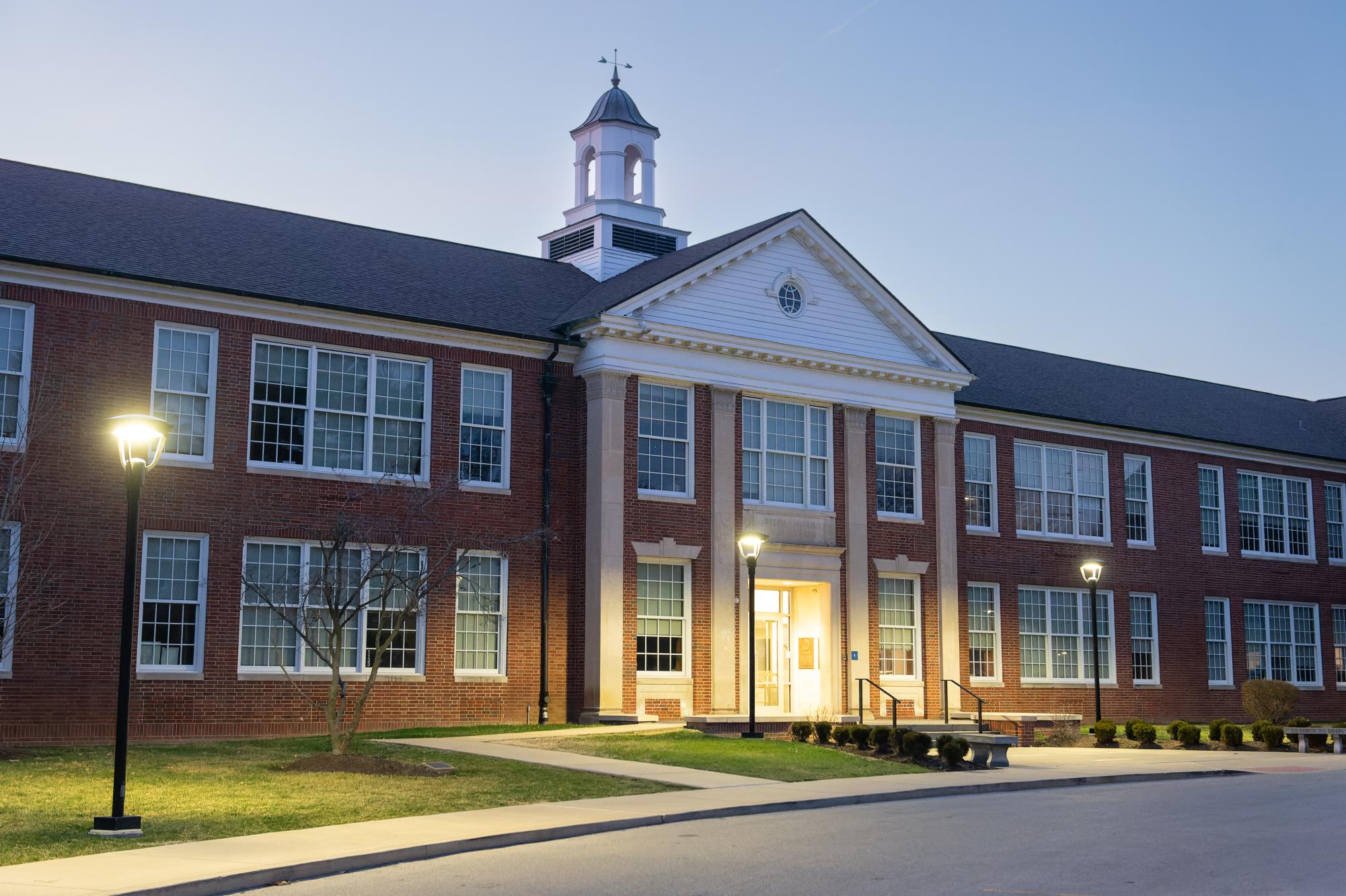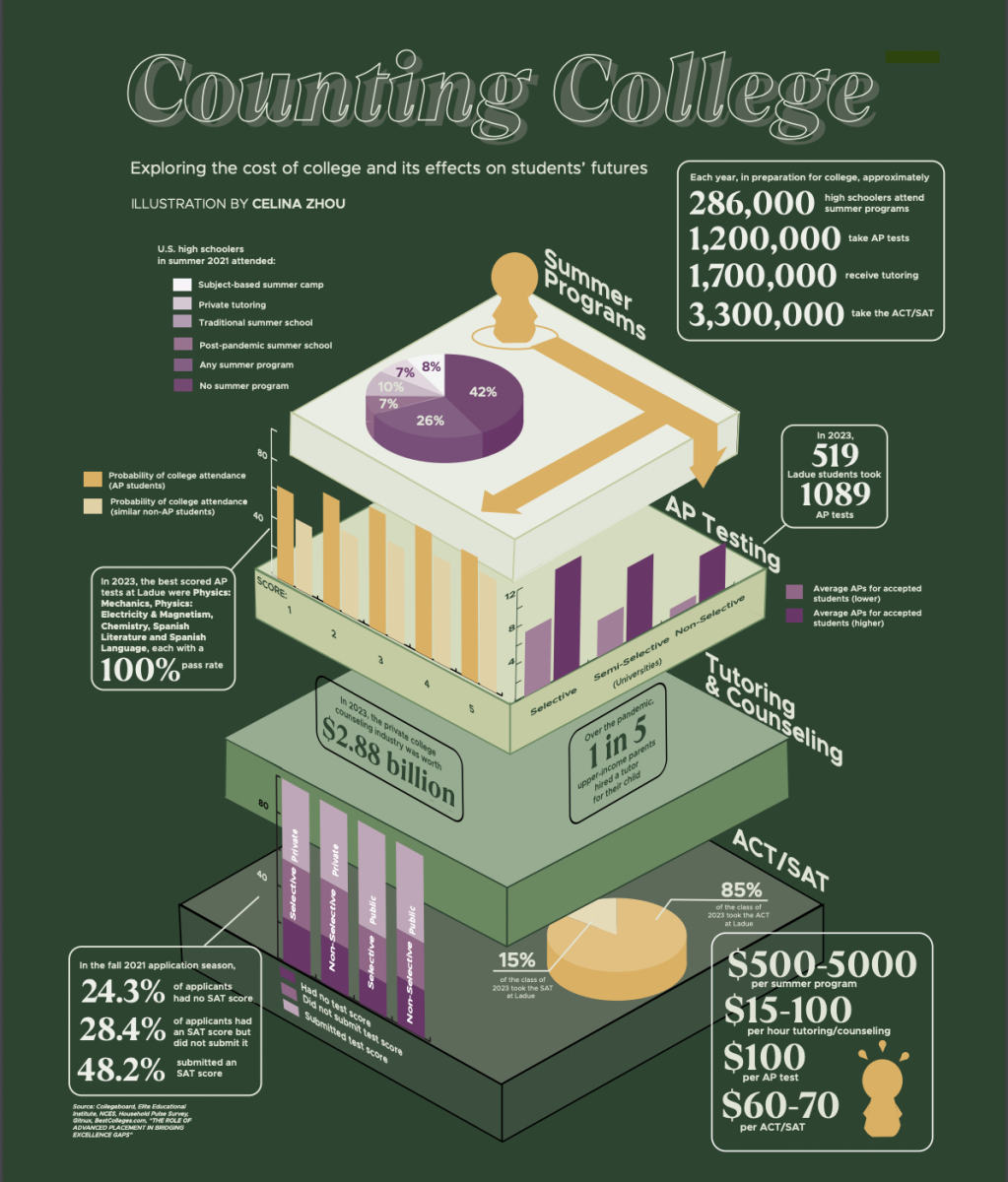Where did you go to high school?”
It’s a question echoed everywhere in St. Louis — a late night escapade to Ted Drewes, visit to the Arch or Cardinals game at Busch Stadium. However, beyond the seemingly innocuous front, the question poses a larger inquiry into one’s identity. It assigns the answerer into their social class — and, by default, their value in society.
St. Louis is home to 109 high schools — 50 private high schools, 17 St. Louis city public schools and 42 St. Louis county public schools — each with varying sources and amounts of revenue. Public schools, specifically, are funded via property taxes. The higher the value of homes surrounding a school, the more money allocated. Additionally, for some schools, taxes aren’t the only source of income — donations from foundations also play a role. Economic disparities are ultimately furthered because not all St. Louis schools have access to such foundations. Monetary means can inevitably build a school and its reputation, affecting the factors such as student envi ronment, teacher environment, stigma and school opportunities.
Student Environment
The impacts of being in an underfunded school often manifest in the school’s education quality and the resources they have for students to succeed. Kate Sheley (11) experienced this firsthand, as she attended Flynn Park Elementary School in the University City School District during kindergarten and first grade.
“When I came to Ladue, they were like, ‘Okay, now we’re going to go get the MacBooks.’ I was like, ‘Are you kidding? Macbooks?’” Sheley said. “[In] my experience, we had two iPads in the entire classroom that we had to rotate through. If we had to use computers, we’d get these clunky, old computers and they never ended up working, so we usually worked on paper.”
Monetary resources also come into play when considering a students’ home life: taking care of their siblings, doing chores and juggling a job. Such situations may inevitably take away from studying or participating in extracurricular activities.
“I knew a ton of kids who had jobs,” Sheley said. “My sister’s friends, who were like 13 [or] 14 [years old], had jobs. I knew kids who just didn’t have time because they had to watch their siblings because their parents were out working. Kids got behind [in school] because of these economic issues.”
However, financial instability isn’t the case for 100% of students, even within a singular school. St. Louis University High School, for example, has a tuition of $21,500 per year, implying higher monetary means per student. In reality, more than four out of 10 students require tuition aid each year. This disparity may manifest in athletic activities, where money often finds a way into the conversation.
“[Money] gives [some students an] advantage in the athletic department, just naturally, because they come from a wealthy family,” Jack Finney (11) said. “I mean, [if] you looked at all the kids that made the freshman soccer team [at SLUH], it was all these kids [who] were loaded. It can just be about the money.”
The higher paying a parent’s job, the more money their family tends to have. At lower-funded schools, parents are often in lower-paying jobs, and impacts are felt throughout the family.
“Kids look at their parents in an idealistic way,” Sarmistha Pulagam (9) said. “I know that from experience. Parents at Ladue are lawyers or WashU professors, people who have had degrees and who are well educated people. At Parkway [West], you don’t find that many parents like that.” Parents aren’t the only ones with a say in academic spaces. Teachers, as well, play a role — but when home life isn’t perfect, academics may suffer.
“Where you come from socioeconomically is going to affect all the things that I can’t control,” science teacher Benjamin Nims said. “The only thing I can control as a teacher is my lesson, how I lay it out [and] how I help you meet these goals. But in terms of when you leave my classroom, I can’t control any of that. Socioeconomics plays into those things that I can’t control [and] a student [can’t control], so it’s definitely going to have an impact on learning.”
Teacher Environment
Alongside students, teachers are a large part of a school’s environment, as they provide the knowledge and resources necessary for a student to learn and grow. In the 2022-2023 school year, Saint Louis Post-Dispatch found that a Ladue teacher is paid approximately $76,000 per year, while the average St. Louis Public School District teacher is paid $57,000 per year. The salary difference may be a factor in a teacher’s decision to leave a lower funded school.
“There was only so much in terms of salaries [at Sumner High School],” assistant principal Annette Hayes said. “[With] the disparities, we can even go back to [when] segregation was used, [because] it’s existed since then. Separate but equal was never equal — and even more now, because the gap is so wide that it’s still not equitable.”
Even beyond teachers, funding affects a school’s entire staff. Jane Doe* saw this when working at McCluer High School, which is in the Ferguson-Florissant School District.
“The district does not pay custodians very well, so they were leaving and it was hard to staff the custodial team,” Doe said. “That led to more disarray of the building because things weren’t being cleaned up, [which] leads to an unwelcoming environment for students and teachers.”
Such an atmosphere was only furthered by the limited or lack of support from administration.
“When a teacher [needed] something, whether that be supplies [or] help with a particular student or a particular class, help from administration would not come quickly,” Doe said. “The communication between the different levels of staff was not good, and lower staff were not supported by higher staff.”
This lack of assistance isn’t exclusive to the Ferguson-Florissant School District — it plagues numerous schools.
“[I] met a teacher at Vashon [High School] who was at a public place, copying passes because the school didn’t have paper,” Villa Duchesne English teacher Kimberly Gutchewsky said. “He was using his own money to make things that were required. When you don’t have the money for things like that, it’s asking a lot of a teaching staff.”
Teachers using their own money may lead to the high teacher turnover present in Title I schools, where at least 40% of the student population lives in poverty. In 2023, Missouri’s Department of Elementary and Secondary Education reported that the teacher retention rate for Title I schools was 54.2% after three years.
“There is [a] teacher shortage situation,” Hayes said. “There’s not always a guarantee that you’re going to get a teacher that [is] certified. It could be a sub for the entire school year, because they don’t have enough teachers that have applied.”
Stigma
Differences often breed stereotypes, and the large disparity between schools in St. Louis can make such stigmatization unavoidable. Ladue School District is no outlier.
“[Ladue is] standardized as the rich school,” Pulagam said. “When I went [to Parkway West], they [were] like, ‘Oh, so you’re rich.’ I’m like, ‘No, I’m not.’ I just didn’t get it. And then, when I went [to Ladue] and saw what the environment was like, I was like, ‘Yeah, now I understand why Ladue’s considered a rich school.’”
Gutchewsky also experienced this stigmatization, as she was ignored because of her ties to Ladue.
“I stopped doing professional development workshops in the St. Louis area, because when I would go to speak to something, people would dismiss me before I opened my mouth,” Gutchewsky said. “[They were] saying, ‘You teach at Ladue, their tutors are going to do all their homework. Why are we even listening to you?’ There was this perception that Ladue [students] are privileged enough where other people do their work. It bothered me so much that I got tired of defending all of my students.”
However, Doe is an example of how such stereotypes can be shattered through proper knowledge and understanding.
“I was guilty of having this perception,” Doe said. “Before I interviewed here, [I would] hear Ladue and think ‘rich white kids.’ And then, when I started looking at the website, interviewed here, got hired, walked around the building and then actually started teaching, [the stigma dissipated]. I really love this district because it is so diverse.”
School Opportunities
Despite the stigmas present, at the end of the day, a school is a learning institution. Providing a quality education is a fundamental part of a school — factors such as AP classes and class variety play into this. A hallmark of having a quality education is a school’s accreditation, which is granted by the state — once accreditation is lost, diplomas are rendered invalid.
“There was provisional accreditation [at Sumner] during my time there,” Hayes said. “The state had to step in to help figure out what the resources are and what [was] needed to get accreditation.”
Due to accreditation’s effect on academics, some students may turn to sports as a way to succeed in college and beyond.
“There is this stereotype that a lot of students fought, [thinking that], ‘I can only be successful by way of my athletic abilities. This is my way to afford college. I may not be academically the brightest, but I know I am athletically,’” Hayes said. “It’s a stereotype, and it’s unfortunate.”
However, categorization isn’t true for every school and program — the nuance in educational opportunities is important to recognize, because even students within a singular school come from widely diverse backgrounds.
“In [University City High School] they have great programs, great opportunities for kids and the AP assortments,” social studies teacher Matthew Horn said. “Truthfully speaking, I think the facilities might be a little nicer [at Ladue], but I think that the programs that are offered to students both in and out of school are relatively diverse at both schools.”
When present, equal resources and money can indicate that all students have the ability to succeed. Nims observed this while working at Maplewood Richmond Heights High School for 15 years.
“Everybody has the potential to learn and grow, and everybody has to just start from where they are,” Nims said. “Not everybody’s starting from the same place, but that’s okay. We can all get better [and] we can all learn.”











